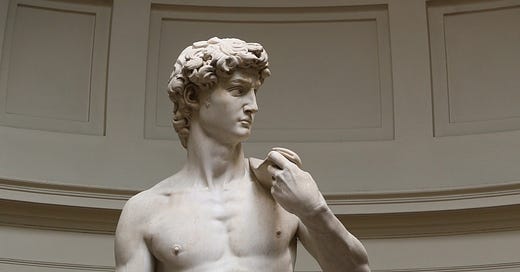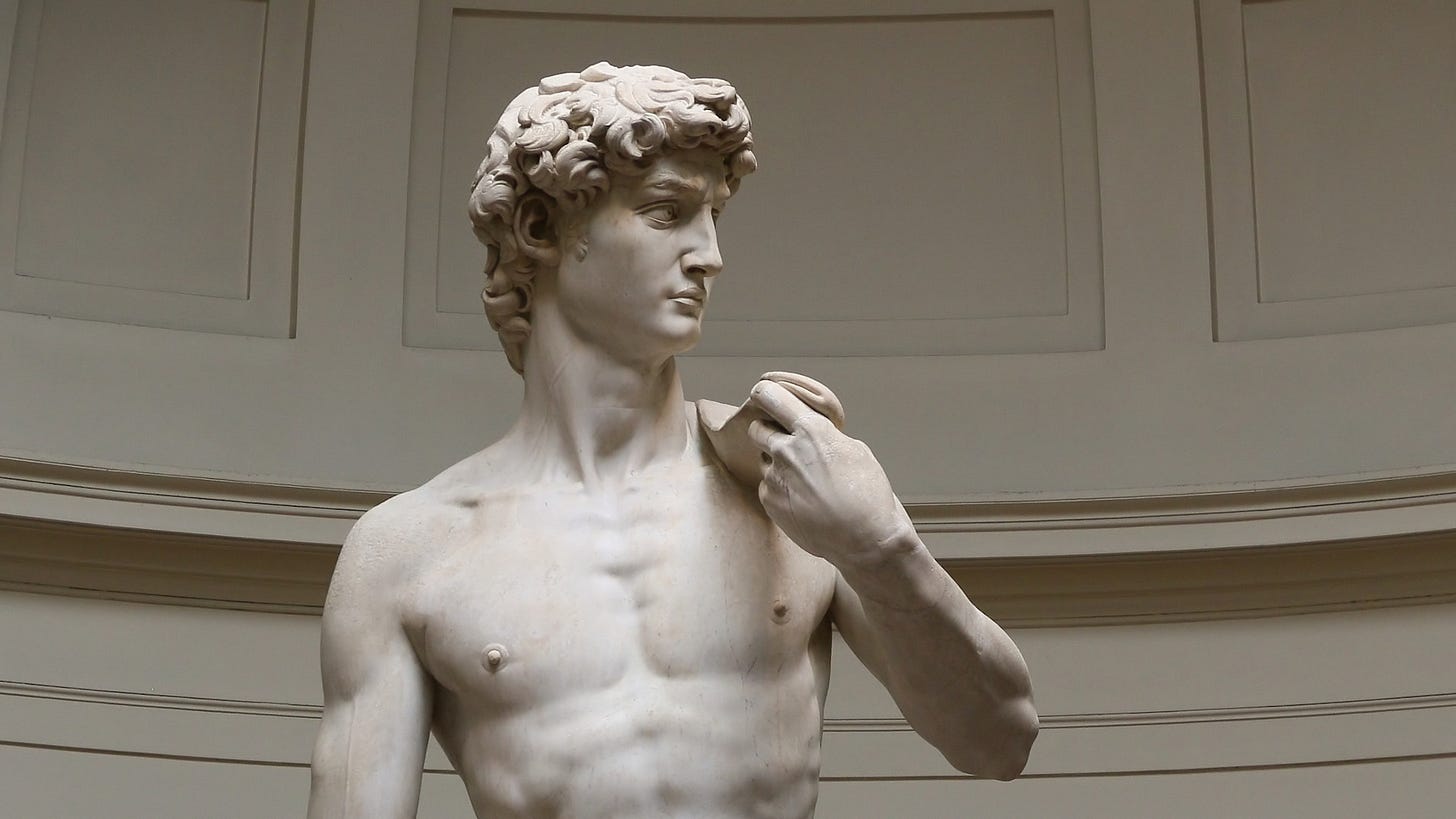Welcome back to Ordinary Delusions, a search for answers in the 360-degree calamity that is the year 2025.
I recently spoke to The Trend Report for their series on personal taste. You can read that here. It was a long and interesting conversation, thank you to Kyle for having me.
There are many types of guy to be found in the murky cultural swamp that is the manosphere. The hustle bros are the ones rubbing banana peel on their faces, documenting their absurd morning routines and insisting that getting up early can solve all your problems. They squeeze their lats into cheap skinny suits and wear pastel colored sportswear while they drive their leased G Wagons. You probably shouldn’t buy their courses or supplements.
It doesn’t take a PHD in psychology to notice that there’s a lot of anxiety under the surface of the hustle bros and their bizarre rituals of self-control. “A man offering a caricature as comfort, selling certainty to those unsettled by change” writes Derek Guy in Bloomberg, in an essay on the changing aesthetics of the alpha male.
Here’s what I wrote a while back, when Ashton Hall’s absurd morning routines went viral:
“There’s tons of this kind of stuff online and it says a lot about where men are at in this era.
Controlling behaviors are driven by “high levels of internal anxiety” according to Psychology Today. “The impulse to control serves a protective function against feelings of vulnerability, which controlling people associate with powerlessness.” And boy is there a lot to feel anxious and vulnerable about these days! There’s no good jobs anymore, houses are unaffordable, rent is a rip off and going to university will put you in debt for most of your life.
Facing a world that is senselessly unfair, the hustle bros turn inward and control.”
Their outfits and habits are absurd, but the feelings are familiar. The male psyche has a lot to worry about: money, our place in society, work and our futures, but also our body fat percentages and our hairlines. And, of course, our outfits.
It was not always this way. When I was a teenager, back in the 00s, putting too much thought into your appearance was superficial, effeminate, even gay. And as Derek Guy points out in his Bloomberg piece, lats and abs were not aspirational back in the 19th century. The guys with real status were soft, pale wimps who spent their days drinking tea and ordering servants around.
But now, clothes are a big deal. The menswear space has exploded in size, and it’s replicated the same structures and habits as womenswear — a swirling cycle of trends, collections and runway shows, with a cohort of blogs, influencers, shopping newsletters and podcasters to help you make sense of it all (this is what I did before Silicon Valley “disrupted” my career.)
Honestly, the market for men’s clothes has never been better. Here’s another thing I wrote a while ago:
“We have thankfully moved on from the stiffness of the #menswear era, when brands made excellent clothes in restrictive silhouettes. We have also forgotten the silliness of the hype era, when brands pumped out nonsense collaborations splattered in embarrassing logos. Whatever you’re into, someone’s making a good version of it somewhere. Guys wear kilts and nail polish now. The future is here, and it’s good!”
The massive buffet of menswear is awesome if you’ve spent your adult life fixated on style, but confusing if you haven’t, which is probably why so many of the guys responding to a recent Feed Me survey on menswear referenced Throwing Fits, Blackbird Spyplane and How Long Gone host / internet cool guy Chris Black. Men need to look good now and it’s not as easy as it used to be. You don’t look iconic by putting on the same suit as everyone else and carrying a briefcase into the office. The menswear influencers are here to help.
Unlike the hustle bros, who sell a cartoon vision of masculinity with very dangerous side-effects, these guys are not toxic, they will not destroy democracy, and they won’t even try to sell you an online course. They’re here to shoot the shit about clothes, so that ordinary guys can figure out how to get dressed.
(If you want my advice, it’s this: figure out which tiny slice of the market resonates with you, which shapes look the best on you, and within those boundaries slowly but surely build a wardrobe of well-made stuff that you wear a lot, or just pick up a copy of my first book)
I’m not the kind of guy to give too much thought into the symbolism behind trends — I’ve spent enough time in the industry to know that most of the time, people just wear stuff because they like the way it looks. But there’s an undeniable sense of uncertainty, ambivalence, maybe even anxiety running through men’s style these days.
In the mood board accounts filled with old photos of old-timers like JFK junior and Robin Williams, there’s a suspicion that things were better in a previous era.
It’s fun when Harry Styles puts on a dress for Vogue or Paul Mescal wears a tiny cardigan or guys get into nail polish. But in these nods to femininity, there’s also a rejection of something, too. Maybe even an acknowledgement that men are a bit of a problem?
The trashed Carhartt and Realtree camo that’s become a uniform in Brooklyn and Hackney is kinda ironic — the hardest work anyone is doing in those clothes is passive-aggressive emailing — but it’s also the most macho men have looked in a long time. It’s cosplaying as a construction worker, sure, but it’s also reassuringly manly in a time when nobody knows what that even means anymore.
We should not be surprised that guys are getting lured into the manosphere, a bizarre swamp that tells people to live like digital cavemen. It’s the disappearing career ladders, economic turmoil and unaffordable houses, but also the discourse about straight men being a threat to everyone else. Toxic masculinity is a problem, but what about regular, ordinary, textbook masculinity? Is that bad too? IDK, it’s confusing.
“I want men to be able to see themselves in the accepting world we all deserve,” wrote Duncan Meisel a while back, in Blue Bonnets. He’s spent his career in climate, and also deadlifts.
Maybe we need to spend much less time thinking about what it all means and much more energy on just, y’know, getting people to believe in a better future, where we all enjoy affordable homes, a stable career path and a world not ruined by fascist gazillionaires.




